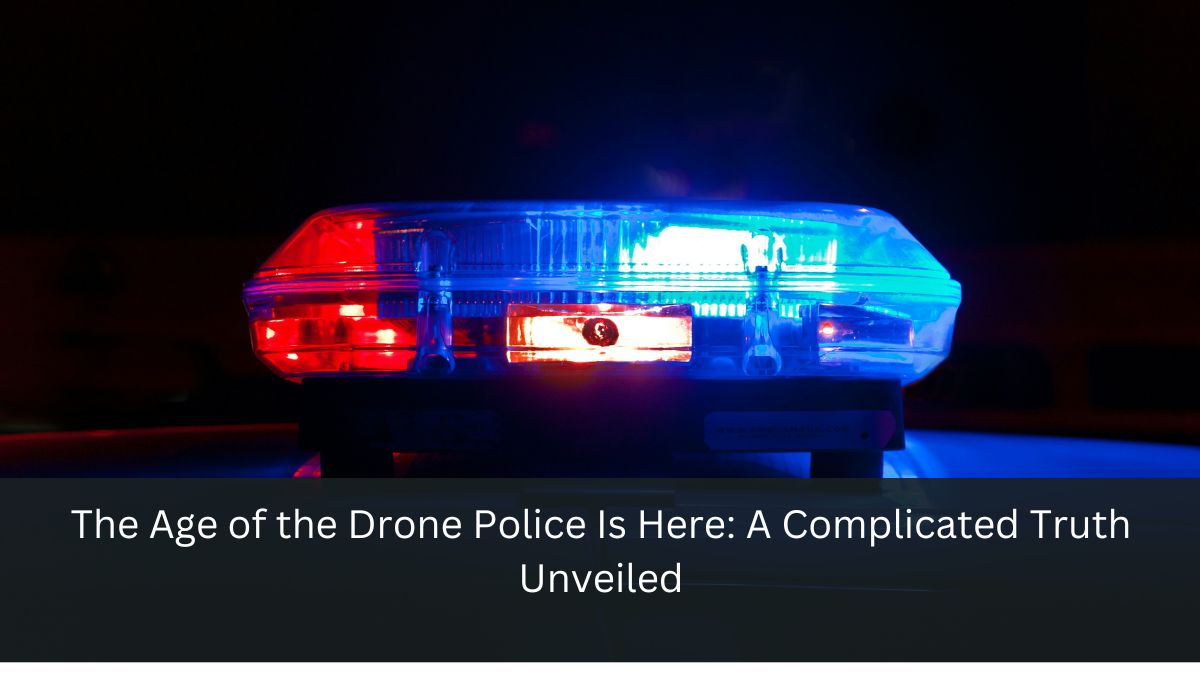AI
The Age of the Drone Police Is Here: A Complicated Truth Unveiled

In the ever-evolving landscape of law enforcement, the use of drones has emerged as a controversial yet compelling tool. A recent investigation by WIRED, based on an astounding 22 million flight coordinates, unveils the intricate realities surrounding the first full-blown police drone program in the United States. As the age of drone policing dawns upon us, it raises profound questions about privacy, civil liberties, and the future of public safety.
A Glimpse into the Chula Vista Incident
On a seemingly ordinary afternoon in August, Daniel Posada and his girlfriend found themselves in a heated argument at a bus stop. Little did they know that their dispute would trigger a response from an unexpected source – a 13-pound drone deployed by the Chula Vista Police Department from a rooftop a mile away.
Personal Anecdote
As a resident of Chula Vista, I vividly recall the mixed emotions that swept through our community when the news of this incident broke. While some lauded the swift response and technological advancement, others voiced concerns about the potential invasion of privacy and the normalization of surveillance. This incident served as a microcosm of the larger debate surrounding drone policing, a debate that has only intensified as more cities consider adopting similar programs.
The Rise of Drone Policing
The Chula Vista Police Department’s pioneering drone program is not an isolated case. Across the United States, an increasing number of law enforcement agencies are exploring the use of drones as a means to enhance public safety and streamline operations. According to a study by the Center for the Study of the Drone at Bard College, at least 1,172 state and local public safety agencies had acquired drones as of 2022.
Relevant Statistics
The adoption of drone technology in policing is driven by a variety of factors, including cost-effectiveness, improved situational awareness, and the ability to access areas that may be inaccessible or dangerous for human officers. However, the proliferation of this technology raises significant privacy concerns, with a recent survey by the Pew Research Center revealing that 54% of Americans are opposed to law enforcement agencies using drones for routine surveillance.
Balancing Public Safety and Civil Liberties
As the age of drone policing takes flight, it is imperative to strike a delicate balance between public safety and the preservation of civil liberties. Proponents of the technology argue that drones can provide invaluable assistance in search and rescue operations, crime scene investigations, and emergency response situations. However, critics warn of the potential for abuse and the erosion of privacy rights, particularly in the absence of robust regulations and oversight mechanisms.
Incorporation of Quote
“The deployment of drones in law enforcement raises significant privacy concerns and has the potential to create a chilling effect on free speech and association,” said Jay Stanley, a senior policy analyst at the American Civil Liberties Union. “While drones can be a useful tool in certain limited circumstances, their use must be strictly regulated to prevent abuse and protect constitutional rights.”
Crafting a Responsible Path Forward
As cities across the nation grapple with the implications of drone policing, it is crucial to engage in open and transparent dialogue among policymakers, law enforcement agencies, civil liberties organizations, and the general public. The development of clear guidelines, rigorous oversight mechanisms, and robust privacy protections is essential to ensure that the benefits of this technology are harnessed responsibly and equitably.
Call to Action
In the age of drone policing, it is incumbent upon all stakeholders to remain vigilant and proactive in shaping the future of this technology. Citizens must educate themselves on the potential implications and engage in informed discussions with their elected representatives. Law enforcement agencies must prioritize transparency and accountability, while policymakers must strike a careful balance between public safety and the preservation of fundamental rights. Only through collective effort and a commitment to ethical principles can we navigate this complex landscape and ensure that the age of drone policing serves the greater good.
The age of drone policing is undoubtedly upon us, and the investigation by WIRED has shed light on the intricate realities and challenges that accompany this technological advancement. As we embark on this new era, it is crucial to approach it with a nuanced understanding, a commitment to ethical principles, and a steadfast resolve to uphold the values of privacy, civil liberties, and the rule of law. By embracing open dialogue, fostering accountability, and prioritizing the well-being of all citizens, we can forge a path that harmonizes public safety with the preservation of fundamental rights. The age of drone policing presents both opportunities and challenges, and it is our collective responsibility to shape its trajectory for the betterment of society.
